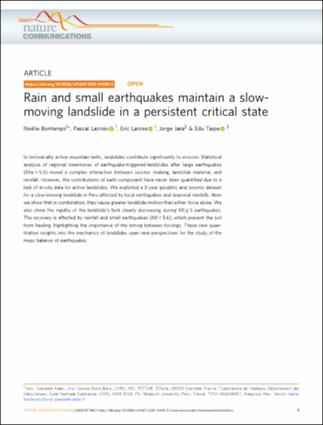Please use this identifier to cite or link to this item:
https://hdl.handle.net/20.500.12544/2915Files in This Item:
| File | Description | Size | Format | |
|---|---|---|---|---|
| Bontemps-Rain_and_small_earthquakes_maintain.pdf | Artículo científico | 1.32 MB | Adobe PDF | View/Open |
This item is licensed under a Creative Commons License












